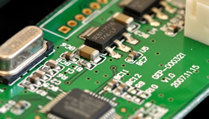Despite advances in payment tech, companies still rely on paper checks according to an AFP survey. Despite lots of progress in electronic payments for corporations many still use good old-fashioned paper checks, according to new survey from the Association of Financial Professionals.
Despite lots of progress in electronic payments for corporations many still use good old-fashioned paper checks, according to new survey from the Association of Financial Professionals.
“[D]espite a continued decline in their use, paper checks remain the dominant payment method,” the AFP said in its report. Still, companies using paper checks to make and receive payments continues to decline, the AFP said, and most of them are moving toward electronic payments. AFP said this is mainly due to the continued pressure to cut costs, be more efficient, improve cash forecasting, and get a better handle on fraud.
AFP said other key findings include the fact that the typical organization receives 50 percent of its business-to-business payments by check (versus 81 percent in 2004). And the future looks more automated too: 48 percent of organizations are likely to convert a majority of B2B payments made to major suppliers from checks to electronic payments in the next 3 years.
The AFP survey also found that:
- Among organizations that make payments cross country borders using multiple currencies, the most widely used payment method is wire transfers.
- Email is the delivery method most (74 percent) likely used to deliver and receive remittance information tied to organizations’ ACH payments.
- Organizations are more likely to have integrated their accounting systems with their ACH payment systems than with their card systems.
AFP also said mobile payments are picking up (and is expected continue to pick up in the next three years); it’s still a small number now, however. Many companies are “evaluating increasing their use of mobile tools for payments and are putting the most focus on:
- Review payments sent or received (cited by 37 percent of respondents)
- Review balance and other payment information (37 percent)
- Approve payments (36 percent)
The AFP said that while the use of paper checks is declining, it is declining at a slower pace than in the previous surveys of 2010 and 2007, a trend it cannot entirely explain although it seems the smaller companies in the survey are perhaps less likely to spend money on automation.